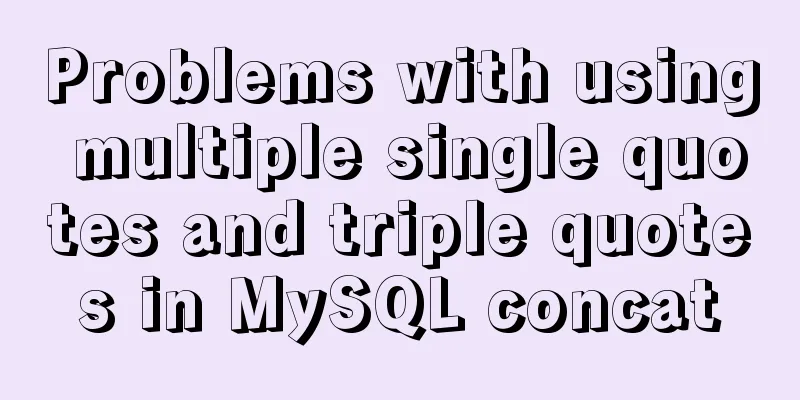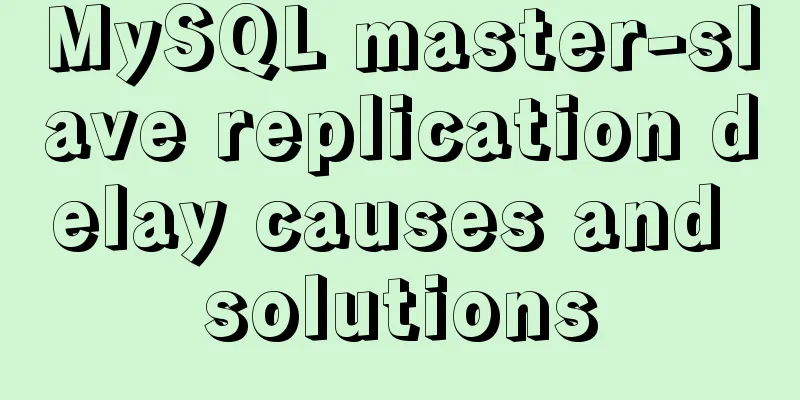Facebook's nearly perfect redesign of all Internet services

<br />Original source: http://www.a-xuan.cn/?p=197  I logged into Facebook just now, but this time I didn't see the homepage as usual. Instead, a letter from founder Mark Zuckerberg popped up. In just a few lines, it reflected this nearly perfect revision process among all Internet services. Let’s first read the letter carefully:  Hey - ——————>It all starts with Hey. This title from Mark Zuckerberg at the beginning illustrates the close relationship between the site and its users, a sincere, friendly, unpretentious and unpretentious attitude, which also reflects the idea of product design that grows with the users. Many excellent Internet services similar to it also have similar names, such as Flickr and so on. As a Web2.0 product centered on individuals, the relationship between the site and the user is reflected in every aspect of the product. Maintaining equality and consistency between the site's role and that of the user is the beginning of respecting the user. At Facebook, our goal is to give people the power to share and make the world more open and connected. More than 90 million people across the world have joined this movement and are using the site to communicate and share information with the people they care about most. Today, we're happy to invite you to check out the next evolution of our product. We've been working on it for a while, so we're really excited to show it to you. ——————>The vision of social networking. The first two sentences of this paragraph describe the influence of Facebook as a "social network". They also explain the structure and difference between "social network (SNS)" and "social network (Social network)". The "information presentation with source" constitutes the "dimensional information acquisition" that influences people's use, and the information then constitutes massive "targeted information sharing". Social network (SNS) is a product form of structured information, while social network (Social network) is the evolved presentation of the structured form of social network (SNS). We had three goals to improve Facebook in this version. First, we wanted to make everything clean and simple to use. Reducing clutter makes it easier for you to find what you're looking for and share information with others. Second, we wanted to give you more control over your profile. Everyone should be able to express themselves how they want, which means privacy controls and control over how content appears on your profile. Lastly, we wanted to show the most recent and relevant content. People share so much on Facebook that it's easier to keep up with your friends by focusing on the newest and most important information. ——————>The ultimate evolution of the social system. The focus of this change is on three aspects: 1. Make the information purer. 2. Privacy control. 3. Accurate information transmission. This is also an important pillar to measure whether the social system is solid. In addition, we have seen changes in the information architecture brought about by this revision, which is described in detail in this blog. The phrase "Everyone should be able to express themselves how they want" and the last part, "most important information", explain the driving force of Facebook today. Hard information (such as blogs, pictures, etc.) will follow the flow of time and keep pace with the changes in the world. As long as time passes, users can express any information they want. With a wide range of social contact points and solid privacy settings as a prerequisite, this information will form effective and accurate information transmission in the Facebook network. In addition, after the F8 plan of Open API, more and more people have joined the camp of product design. From the Top 20, we can see that these small products focus on the expression of implicit information. Combining these two perspectives, the hard information expression generated by social networks over time and the endless frequency of soft information exposure brought by open source projects are the social information presentation of Facebook's evolution. Compared with the domestic Kaixin.com, its rise with plug-ins represents that its "Office" user group likes to be highly regarded and discussed on the streets. It would be extremely difficult to go back and develop the expression of hard information at a later stage. However, because Facebook's F8 plan is in full swing, selecting some Chinese translations from the Top list can continue to maintain this group of "Office" users. In contrast, hard information expression truly relies on personal expression, continuously generating content and influence over time, such as 5G. You may have seen the preview Page we created a few months ago to get suggestions from the community on the changes we were thinking about making. I want to thank all of you who wrote in and gave us feedback. It's always great to hear from people using our products all around the world. As you use the new Facebook, please feel free to let us know what you think using the “Send Feedback” link at the top of new pages. To try out the new Facebook, look for a banner at the top of every page. If you get lost, there are help links available as well as the option to switch back to the older version for a little while. I hope you enjoy this next evolution of the site as much as we do. ——————>Channels and methods of communicating with users. I still remember the revision of Douban in November last year. The speed of the revision caught everyone off guard, although a small-scale internal testing method was also used at that time. At that time, Douban community had just exceeded 1 million users and was an era where users had a strong say. Users were very dissatisfied with such a move, and even the "I don't like the new version of Douban" group quickly gathered thousands of users within a day. A few days later, such an article was added to Douban Blog. The article emphasized that the discomfort caused by the revision in usage habits and visual effects was underestimated, and no one was notified before the changes. In addition, the feedback portal, site forum, and Fans group in the test version are channels for listening to the real voice of users, and timely feedback and opinion screening are given. These collective efforts to grasp and guide user habits are readily available. From this we can see that Facebook has done the following "surface work" for this revision: 1. Launch new version testing for the entire site and provide the function of switching to the old version anytime and anywhere. 2. A clear and eye-catching feedback submission channel. 3. Collect opinions and feedback in communication channels such as the station community in advance. So far, from this revision, we can see a clearer outline of Facebook. 1. The team's inherent attitude of equal respect for users is reflected in every detail of the product. 2. Adhere to the way of information exchange between people and adhere to the mission. 3. Maintenance and filtering of information and relationships become the core of evolution. 4. The product revision process is as important as the product launch process. 5. During the revision process, multiple real and effective listening channels can achieve twice the result with half the effort. Finally, thank you Mark Zuckerberg and the Facebook team for bringing more than just a social networking platform to the world. |
<<: What does input type mean and how to limit input
>>: How to restore data using binlog in mysql5.7
Recommend
Analysis of the method of setting up scheduled tasks in mysql
This article uses an example to describe how to s...
JavaScript to achieve dynamic table effect
This article shares the specific code for JavaScr...
Detailed analysis and testing of SSD performance issues in MySQL servers
【question】 We have an HP server. When the SSD wri...
Solve the problem of regular automatic file deletion by crontab+shell script under Centos7
Problem description: Recently, there is a demand ...
MySQL 8.0.16 winx64 installation and configuration method graphic tutorial
I just started learning about databases recently....
How to implement Mysql switching data storage directory
How to implement Mysql switching data storage dir...
In-depth explanation of Vue multi-select list component
A Multi-Select is a UI element that lists all opt...
Detailed explanation of the execution process of mysql update statement
There was an article about the execution process ...
The hottest trends in web design UI in 2013 The most popular UI designs
Time flies, and in just six days, 2013 will becom...
Docker creates MySQL explanation
1. Download MySQL Image Command: docker pull mysq...
CentOS 8 is now available
CentOS 8 is now available! CentOS 8 and RedHat En...
Implementation of Docker deployment of SQL Server 2019 Always On cluster
Table of contents Docker deployment Always on clu...
A performance bug about MySQL partition tables
Table of contents 2. Stack analysis using pt-pmap...
How to use node scaffolding to build a server to implement token verification
content Use scaffolding to quickly build a node p...
Three ways to align div horizontal layout on both sides
This article mainly introduces three methods of i...









